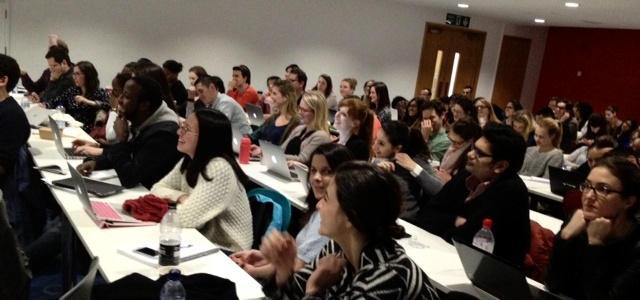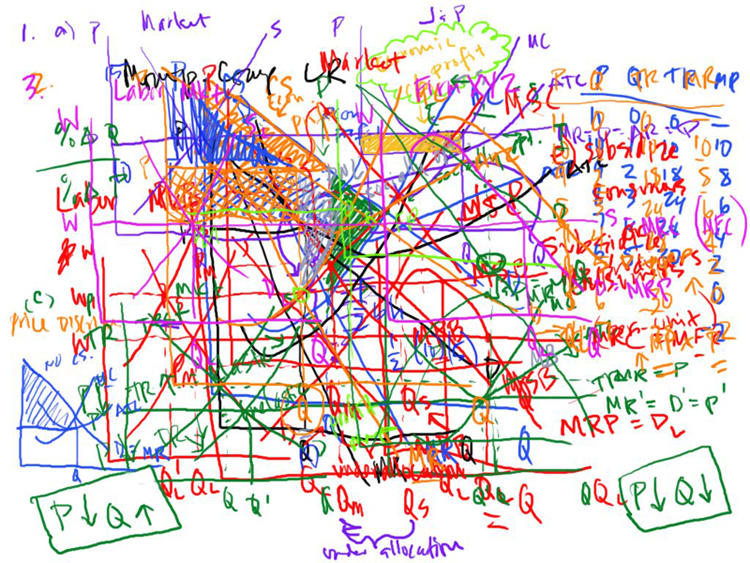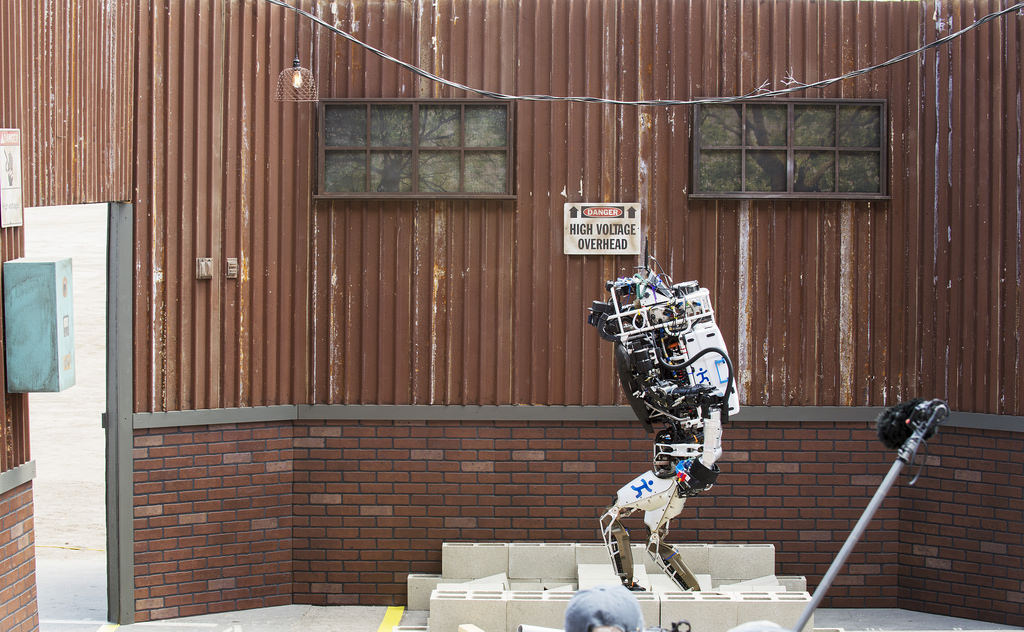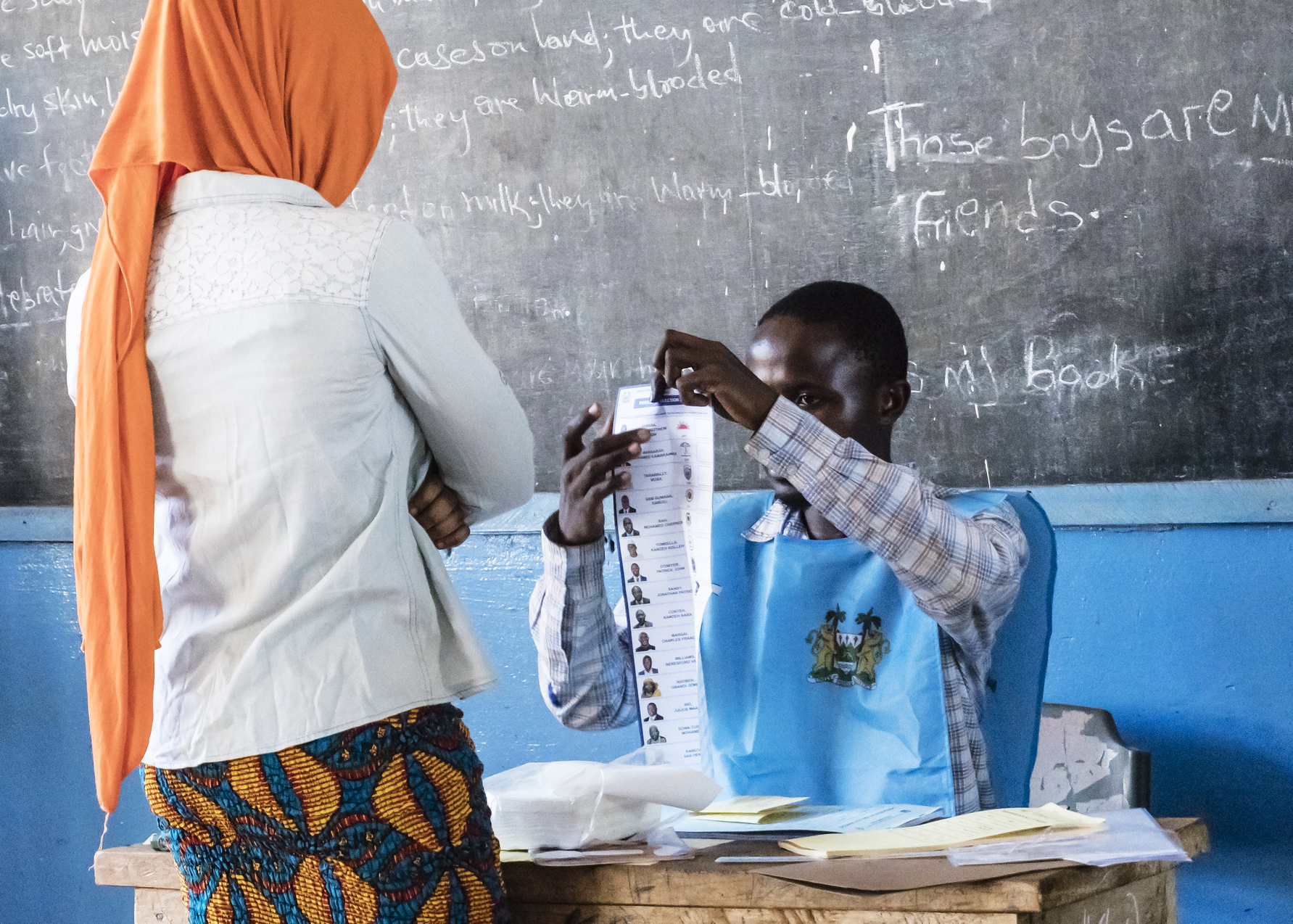
Dr Silvia Masiero, Research Fellow in the Department of International Development, writes on the 2015 Development Debate featuring Professor Robert Wade and Professor Francesco Caselli.
This year’s Development Debate, titled ‘Industrial Policy for Development?’, featured two world-class experts on industrial policy and development, plus a room overflowing with enthusiastic students and penetrating questions. Prof. Robert Wade, Professor of Political Economy and Development at LSE ID, debated with Prof. Francesco Caselli, Norman Sosnow Professor of Economics at the LSE, and Director of the Macroeconomics Program at the Centre for Economic Performance (CEP).
The idea of an “inclusive debate” came alive through the lively participation of students from the ID department and beyond, who engaged the experts, questioning and challenging them on the multiple implications of industrial policy. What follows is a summary of the main arguments put forward in the debate and the rich threads of the discussion that ensued. Although highly summarised, we hope to convey a sense of the enriching discussion.

Prof. Caselli opened the debate with a discussion of industrial policy at large, inscribed in the contemporary vision of development and modernization as a whole. As a core idea, he put forward the concept of a ladder of development – a sequence of stages, or historical phases, each of which is a precondition for moving up to the next one. This notion transcends the layered understanding of development portrayed by modernization theory: on the contrary, it implies an open-ended world system, in which nothing in the world economy is there to maintain a significant gradient between territories (e.g. a gradient in productivity, value-added, or generation of knowledge).
Prof. Wade, in his opening statement, opted for a slightly different descriptive metaphor of the world economy. He put forward the idea of a hierarchy, or more exactly a pyramid with “limited room at top”. A very small number of countries (and populations) have become “developed” in the past two centuries, and their number seems even smaller if one considers the vast “development industry” that has been in place since World War II. This dynamics, observed in the world economy at large, is captured by Prof. Wade’s metaphor of the pyramid.
But this dynamics, Prof. Wade suggests, is also consistent with a broader hypothesis: namely, the one according to which the world economy generates forces that are analogous to gravity, which make the movement up Prof. Caselli’s ladder very difficult. This implies that a first mover advantage may leave developing countries behind, locking them in an “arms race” that they are doomed to lose as a result of initial disadvantage. Both speakers agreed that what might be called the Adam Smith minimal state, which provides peace, easy taxes, and a tolerable administration of justice, but little else, is beyond the reach of many developing countries today.

A student’s question sparked discussion of the suggestive oxymoron: the recent “non-emergence” of most “emerging market economies”. Several market economies considered to be emerging have failed to build sustained rates of growth, or to generate systemic trickle-down mechanisms from economic growth to broader social development. In South Asia and Latin America, big anti-poverty programmes have been developed on the wave of movements to uplift the poor on a wide scale. But strong top-down social safety policies can only be sustained in the long run if coupled with a prosperous economy, the lack of which has led, along with the lack of trickle-down mechanisms, to suboptimal outcomes for big anti-poverty programmes (India, Brazil).
What implications flow from the experts’ core arguments? The idea of an open-ended ladder implies that states should attempt to shape the production structure only once the economy reaches a fairly high point in the ladder. Even if the ladder model is not accurate, the reality is that industrial policy often fails in developing states. As reported by Prof. Wade, a senior World Bank economist asked him in conversation, “For every Korea there are a hundred failures. Who would you put your money on?”
Could the two speakers’ points of view be reconciled? One possible metaphor seeking a synthesis of ladder and pyramid is: a bidimensional pyramid ladder, so the rungs are wider at bottom than at top (i.e. there is less room at top). This seems to incorporate both Prof’ Caselli’s idea of an open-ended ladder, and Prof’ Wade’s hierarchical view in the form of a pyramid. A suggestive metaphor indeed, and one that closes a fascinating, deeply informative discussion!

A full recording of the debate is available here (LSE staff and students only).





